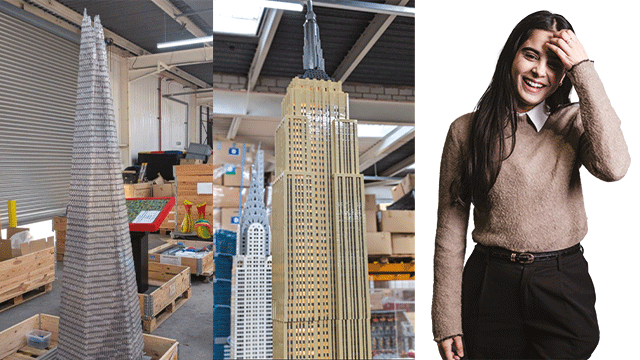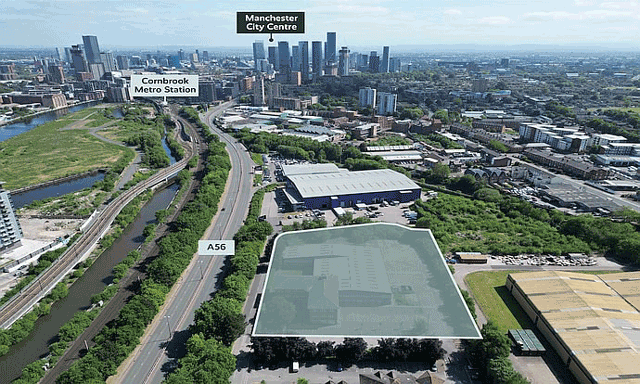Investment in projects such as the DLR extension promised this part of London a dramatic transformation. It is still waiting, writes Adam Tinworth
Lewisham and Greenwich were the boroughs where everything was to happen. Major pieces of investment were on the way. The Jubilee Line was sweeping through North Greenwich where the UK’s main millennium project, the Dome, was located. Meanwhile, the Docklands Light Railway was driving south from the economic powerhouse of Canary Wharf through both boroughs and into Lewisham town centre.
However, not all has gone according to plan. The Dome has not been the success that was predicted, although the local development agencies argue otherwise.
“Everyone knew that the predicted visitor numbers were well over the top,” says Tim Herbert, project manager at the Greenwich Development Agency. But he adds: “It’s still brought millions of visitors into the area who would not have come otherwise.”
While the new transport links have not been a panacea for the area’s problems, both councils are doing their best to capitalise on them. Lewisham has been successful in a £15.9m Single Regeneration Budget bid for European funding. This will be channelled into the north of the town centre to create an integrated transport exchange around the DLR terminus, railway station and bus station.
The exchange will link into Slough Estates’ phase two of the Lewisham Shopping Centre to create an easier connection to the main shopping area. This development will be centred on a multiplex cinema and other leisure uses, with an element of extra retail.” “We are in detailed consultation with an operator,” says Martin Taylor of Slough Estates. He hopes to have the scheme onsite next year.
Meanwhile, the council is taking every opportunity it can. “We’re making the most of our connection to the Thames Gateway initiative,” says Joe Montgomery, the council’s executive director for regeneration. “We’re also reaping the benefits of the economic connection to the Isle of Dogs. That’s the reason we put £6m into the DLR extension, so Lewisham residents could get access to the jobs there.”
The council is campaigning to bring the East London Line south through the borough, a plan that is in front of the LDA. However, the office and industrial markets are not uppermost in the council’s mind. “We’re very comfortable with Lewisham’s status as a residential borough,” says Montgomery.
Certainly, transport links are important to local business. There are proposals for three new river crossings in the region: at Blackwall, near the tunnel; in Woolwich; and further down the Thames Gateway. “Transport is vital, because it underpins the area,” says Geoff Timbrell of the South London Economic Development Alliance.
Meanwhile, Greenwich is far from dependent on the Dome. The town centre has seen some dramatic changes. The Royal Naval College is slowly being converted into a main campus for the University of Greenwich, with other uses including a new tourist information centre, while several commercial developments are reshaping the town centre.
Admittedly, many schemes are still far from completion: Centros Miller’s 8,454m2 (91,000 sq ft) shopping-cum-residential-cum-student hostel development above the new Cutty Sark DLR station is under construction. A scheme to redevelop the rather shabby existing pier by Cutty Sark Gardens into a brand new structure designed by Terry Farrell & Partners is due to start construction as soon as the tourist season comes to an end.
Cruiser terminal for creek
However, the thrust of development leads westwards. At present, a peninsula sticks out into the Thames at the head of Deptford Creek. This contaminated industrial site is due to be converted into a 55,000m2 (592,015 sq ft) cruise liner terminal with a shopping and leisure complex by developer Clearwater Estates. The scheme will go onsite properly early next year – although architectural surveys are already under way.
A footbridge is being built from the existing riverside walk by Cutty Sark through into the new scheme, pushing the town centre westwards, and wrapping it back towards the station. The Greenwich DLR station is only a few minutes’ walk from the scheme – but its proximity is disguised by a tatty council housing block that is due to be demolished and rebuilt within the year. The council has high hopes of redeveloping a triangle of land by the station into a commercial centre for Greenwich, which, unlike Lewisham, still has aspirations as a commercial borough.
“A lot of businesses are based here, or want to be based here because of our proximity to the Docklands and now the ExCeL exhibition centre in the Royal Docks,” says the GDA’s Herbert. “The problem is that there’s nowhere for them to expand.”
Herbert stresses that the council wants to build on the Greenwich brand. The site has a lot of history: Deptford Creek, which runs south from the Clearwater scheme into Lewisham, was once Henry VIII’s naval dockyard. The regeneration efforts, which include several commercial schemes and the £22m Laban Dance Centre, designed by Herzog & de Meuron, the architect responsible for the Tate Modern art gallery, will play on this image as the area comes back to life – or so the theory runs.
But what of the east? The land between the town centre and the Dome is a wilderness of old, traditional industry. Herbert says the borough doesn’t want to lose those employers but would like to better link schemes stemming from Nomura’s acquisition of the Dome to the rest of Greenwich.
“We’re looking at a mix of land use with both existing users and new developments,” he says.
Docklands Light Rail : Threat or opportunity?
While the new transport links have not been a panacea for the area’s problems, both councils are doing their best to capitalise on them. Lewisham has been successful in a £15.9m Single Regeneration Budget bid for European funding. This will be channelled into the north of the town centre to create an integrated transport exchange around the DLR terminus, railway station and bus station.
The exchange will link into Slough Estates’ phase two of the Lewisham Shopping Centre to create an easier connection to the main shopping area. This development will be centred on a multiplex cinema and other leisure uses, with an element of extra retail.” “We are in detailed consultation with an operator,” says Martin Taylor of Slough Estates. He hopes to have the scheme onsite next year.
Meanwhile, the council is taking every opportunity it can. “We’re making the most of our connection to the Thames Gateway initiative,” says Joe Montgomery, the council’s executive director for regeneration. “We’re also reaping the benefits of the economic connection to the Isle of Dogs. That’s the reason we put £6m into the DLR extension, so Lewisham residents could get access to the jobs there.”
The council is campaigning to bring the East London Line south through the borough, a plan that is in front of the LDA. However, the office and industrial markets are not uppermost in the council’s mind. “We’re very comfortable with Lewisham’s status as a residential borough,” says Montgomery.
Certainly, transport links are important to local business. There are proposals for three new river crossings in the region: at Blackwall, near the tunnel; in Woolwich; and further down the Thames Gateway. “Transport is vital, because it underpins the area,” says Geoff Timbrell of the South London Economic Development Alliance.
Meanwhile, Greenwich is far from dependent on the Dome. The town centre has seen some dramatic changes. The Royal Naval College is slowly being converted into a main campus for the University of Greenwich, with other uses including a new tourist information centre, while several commercial developments are reshaping the town centre.
Admittedly, many schemes are still far from completion: Centros Miller’s 8,454m2 (91,000 sq ft) shopping-cum-residential-cum-student hostel development above the new Cutty Sark DLR station is under construction. A scheme to redevelop the rather shabby existing pier by Cutty Sark Gardens into a brand new structure designed by Terry Farrell & Partners is due to start construction as soon as the tourist season comes to an end.










